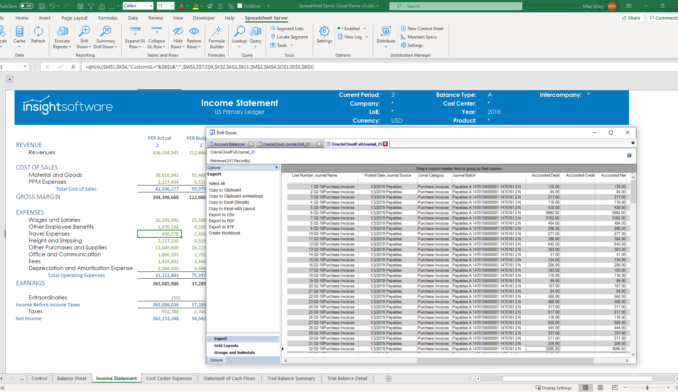Debt Covenant Reporting: A Quick Guide

A healthy cash flow is essential to any business. Most companies, regardless of their size, rely upon debt financing to ensure that the bills get paid on time, that inventory levels are adequate, and that they can pay their employees promptly. Lenders are naturally concerned with the financial health of the organizations to whom they lend money. Consequently, most of them require businesses to provide regular financial reporting and updates concerning their performance relative to those debt agreements.
A debt covenant report provides your creditors with the routine assurance they need to confirm that your company is meeting its obligations with respect to loan agreements and is in a healthy position to repay those debts in full and on time. Most business loan agreements and lines of credit require borrowers to meet certain financial and operational targets. If those targets are not met, lenders may impose restrictions that are intended to enforce financial discipline on your company.
That, in turn, means that your organization may be restricted from engaging in certain business activities or making new investments unless or until you can bring your company back into compliance. Even worse, your creditors may be entitled to demand repayment in full, leaving your company without the cash it needs to operate.
What is Debt Covenant?
A debt covenant is a stipulation embedded within a loan agreement that sets specific limitations or requirements on the borrower to protect the interests of the lender. Beyond the financial metrics and ratios outlined in a debt covenant report, these covenants can also dictate operational actions a company may or may not undertake. For example, they might restrict the company from taking on additional debt, selling significant assets, or making certain types of investments without the lender’s consent. They serve as a safeguard for lenders by ensuring the borrower maintains a certain level of financial health and operational stability. Compliance with these covenants is crucial, as failure to meet the agreed-upon conditions can lead to penalties, higher interest rates, or even the loan being called in early. Essentially, debt covenants are a critical tool in risk management for both lenders and borrowers, encouraging prudent financial and operational practices while providing a framework for ongoing financial discipline.
What is a Debt Covenant Report?
Management is responsible for periodically providing lenders with proof that they are complying with their loan agreements. Typically, a debt covenant report provides some key financial measures relative to profitability, solvency, and other metrics that provide visibility to the company’s performance. These typically include:
- Key financial indicators such as total revenue, capital expenditures, net capital inflows or outflows, and net profit or EBITDA (earnings before interest, taxes, depreciation, and amortization).
- Liquidity and solvency ratios. Although many people confuse these two, there are some important differences. Solvency refers to a company’s ability to meet its long-term financial commitments, including liabilities that are scheduled to come due beyond a 12-month window of time. Liquidity refers to a company’s ability to pay back short-term (or “current”) liabilities; it also takes into account the company’s ability to sell assets quickly to raise cash. Some common ratios include:
Current Ratio (current assets divided by current liabilities)
Quick Ratio (the sum of cash, cash equivalents, marketable securities, and accounts receivable divided by current liabilities)
Debt to Equity Ratio (total debt divided by total equity)
Debt to Assets Ratio (total debt divided by total assets)
Interest Coverage Ratio (operating income divided by interest expense)
(The current ratio and quick ratio are common measures of liquidity, whereas debt to equity, debt to assets, and interest coverage ratios are longer-term measures of solvency.)
- Profitability ratios are often broken down into two subgroups: ratios that measure margins, and those that measure returns. Some popular margin ratios include:
Gross Profit Margin (the net of revenue minus cost of goods, then divided by revenue)
Operating Profit Margin (net operating income divided by revenue)
EBITDA Margin (EBITDA divided by revenue) This differs slightly from Operating Margin insofar as the numerator excludes depreciation and amortization.
Some commonly used margins for measuring returns are:
Return on Equity (net income divided by total shareholder equity)
Return on Assets (net income divided by total assets)
Return on Invested Capital (income minus dividends, then divided by the sum of debt and equity)
- Any other information that lenders feel relates to your company’s ability to repay the loan. This can include things such as customer adds, same-store sales, or return on investment for specific assets.
Generally, when we talk about a debt covenant report, we are doing so in the context of a contractual obligation or commitment on the part of your company as borrower. It’s important to realize, however, that any of the metrics listed above can be extraordinarily useful as management tools. insightsoftware provides some sample reports to help business leaders better understand some of the most common financial ratios for gaining insight into their organizations’ performance.
Why are Debt Covenant Reports Important for Compliance?
Debt covenant reports enable your organization to maintain positive relationships with lenders, increase the likelihood that credit will be available to you when you need it, and decrease the chances that creditors will call in existing loans before they are due.
Generally speaking, when a company borrows money or applies for a line of credit, the resulting legal agreement includes provisions relating to financial performance and other elements. These provisions typically outline the conditions that a borrower must maintain to continue the loan or line of credit under standard terms. It is common for lenders to require debt covenant reports on a monthly or quarterly basis, or occasionally just semi-annually or annually.
In addition, debt covenants often define what they require the borrower to do, or, in many cases, what they restrict the borrower from doing. Withdrawals of owner equity, for example, are frequently proscribed, as are excessive payments to company principals. Debt covenants usually also outline the financial metrics that they expect the borrowing organization to maintain.
Companies that fail to deliver accurate and timely reports to lenders will negatively impact the financial health of their organizations. Not only does non-compliance send a negative signal to lenders, but in many cases, it can also result in financial penalties. By producing accurate and timely debt covenant reports, your company can mitigate any risks related to non-compliance, avoid default on your obligations relating to debts, and fend off any untimely events that could adversely affect your organization’s ability to operate at optimal efficiency.
A good debt covenant report is not just about avoiding unpleasantness, though. It can also help to establish your company’s credibility with lenders and firm up your reputation as a creditworthy organization. In this respect, clear, accurate, and timely reporting can help you stay in compliance and can be a valuable tool in the event that your company needs to raise additional funding.
As a management tool, many of the common features of a debt covenant report can be helpful in assessing the overall performance of your company by providing insight as to its liquidity, solvency, and effectiveness in generating profits. It can help managers establish the ideal capital structure for the company, including whether it makes sense to take on additional debt or seek to increase equity investments.
Many of the measures on a debt covenant report can be helpful in forecasting future earnings and comparing performance to historical numbers. If you have access to benchmarks from other companies of your size in your industry, you can also assess your company’s overall effectiveness relative to your peers.
How to Compile a Debt Covenant Report
You typically produce a debt covenant report at the end of the company’s closing process, that is, after the month-end close, quarterly close, or at the end of the fiscal year. Ultimately, the content and format of your debt covenant reports depends on your actual loan agreements and lender expectations. Unfortunately, most of the out-of-the-box reporting tools that come with accounting and ERP software do a poor job of presenting financial information in a format that conforms to those expectations.
Standard ERP financial reports do not typically present financial ratios, for example. That’s why it is so important to have a toolset that provides for flexible, accurate, and meaningful financial reporting, without extensive customization that requires the involvement of highly trained (and often very expensive) technical experts.
If you don’t already have such a tool in place, begin by looking at insightsoftware’s Financial Ratios Dashboard, a free tool that can help you learn more about which ratios are most meaningful for your business and how to calculate them. When you download the Financial Ratios Dashboard and customize it with your own data, you’ll learn how dynamic dashboards can bring financial ratios to life, helping you to align key leaders throughout your organization around the KPIs that matter most.
Purpose-built reporting tools can be helpful in several respects:
- They enable you to tailor reports to the precise needs of your organization (and to the exact expectations of your lenders), without requiring IT involvement every time you need to change something.
- They can proactively deliver reports to the people who need them, when they need them.
- They can provide a range of different output formats tailored to specific recipients.
In addition, the best financial reporting software can also handle operational reporting based on real-time information from multiple sources. Some organizations relegate operational reporting to the back burner, but for debt covenant reporting, operational reporting is important. Many lenders will ask for additional information that they believe provides a good indication of the health of the business. Many such metrics require insight into operational matters. For example:
- Any significant decrease in demand indicated by higher or lower sales, including potential deals in the sales pipeline
- Disruptions to the company’s supply chain
- A drop in the market value of any of the company’s assets, including fixed assets or investments
Even if your lender does not require these kinds of metrics in your debt covenant reporting, it is recommended that management review them on a regular basis to develop clear visibility to potential issues before they grow into larger problems. It is also recommended that finance leaders review their organizations’ loan agreements on a regular basis—including debt covenant clauses—to determine whether the company’s current performance is likely to result in a compliance failure.
Creating Accurate and Timely Debt Covenant Reports
Regardless of which data points you include, it is critically important that you produce accurate debt covenant reports on time. After all, the consequences for delivering a late report, or an inaccurate one, can be severe. There may be financial penalties, reputational damage, or even a downgrade in your creditworthiness with specific lenders.
Because debt covenant reports do not necessarily conform to the standard formats provided by most ERP software, many companies set out to design these reports using spreadsheet software such as Microsoft Excel. Although Excel does provide maximum flexibility, there are some significant drawbacks to producing these kinds of reports manually.
The typical manual process goes something like this: After closing the books, the finance team runs the financial reports from the ERP system, then dumps that information to a CSV file, where they can import it into Excel. Someone has to massage the numbers within the spreadsheet, which often involves copying, pasting, and moving information around. You must frequently update formats so that the resulting report looks clean and is consistent with what was provided to the bank in previous months. In addition, you must manually enter some numbers, usually based on calculations made outside of the ERP system.
The first problem with this kind of process is that it is slow and tedious. It requires a skilled professional who understands the numbers and is able to pay close attention to details. Even worse, manual processes like these often produce reports that contain errors. Simply by omitting a number or copying and pasting something into the wrong cell in Excel, even the most attentive finance professional can often end up with errors in their report.
Instead, finance leaders should look for tools that can link directly to source data in real time (or near real time), extracting the necessary information directly from the ERP system (and other operational systems) in the same way every month. By automating the process, finance teams can ensure absolute consistency in the format of the debt covenant reports they produce, and can eliminate the most common causes of inaccuracy.
If your organization is struggling to get a handle on debt covenant reporting, or on financial and operational reporting in general, insightsoftware can help. For nearly three decades, insightsoftware has been helping business leaders transform their organizations by unleashing the power of financial intelligence with real-time reporting tools that automate processes and empower your finance team. To learn more about how you can improve financial reporting in your business, contact us today for a free demo.









